
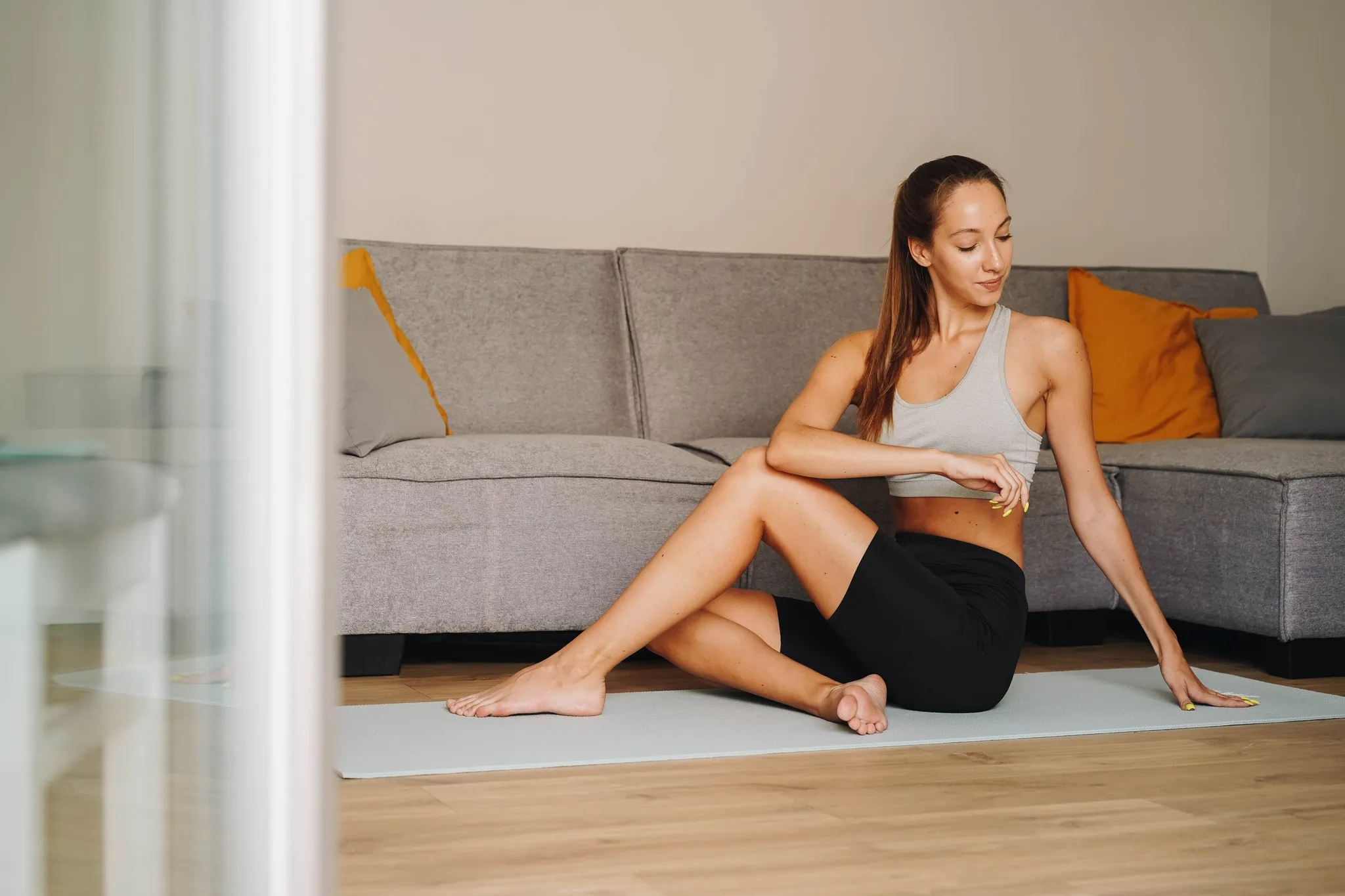
It’s easy to think that symptoms of soreness, stiffness, and lack of mobility in your body is simply an issue solely related to muscles. But there are other factors that can create aches and pains besides muscle tissue.
Issues like chronic muscle pain can actually be caused by stuck connective tissue called fascia, which attaches and protects the muscle fibers in your body. When it sticks, it can prevent your muscles from performing properly, leading to pain, rigidity, and decreased mobility.
So what is fascia, or myofascia tissue exactly? It plays an important function throughout your body, connecting muscle fibers and holding your organs and blood vessels in their proper place. You can think of your fascia tissue like a thin wrapper that’s made of collagen, surrounding your tissues and organs, keeping them safe and sound. There are multiple layers of fascia throughout your body, and there are some layers buried deeply to protect your bones and blood vessels.
Basically, fascia is like a second skin, and just like your epidermis, it can become tight, dried-out, and lose elasticity. Periods of inactivity and immobility can cause your fascia tissue to stick or become tight. Surgery, injury, and aging can also create issues with this connective tissue. And when it loses its elasticity, it can make you feel achy, sore, and stiff.
In order to restore the pliability of your fascia tissue, you must ease the tension to prevent this tissue from becoming even tighter and more painful. Doing so can be simple — by improving the flexibility of your body overall, you can also help improve the elasticity of your connective tissue. There are a handful of ways you can unstick or “release” fascia, like acupuncture, massage, or using foam rollers. Each of these methods offer a targeted approach and can help with specific areas.
However, if you want to make a difference in the fascia tissue throughout your body, yoga may be one of the best tools you can use. Through regular practice, you can not only improve the pliability of your fascia tissue, but you can help maintain this important protective layer so that it doesn’t become rigid or stuck in the future — preventing any further soreness or chronic pain.
A myofascial release yoga session will typically include props like foam rollers, blocks, and therapy balls to help relieve tension in the connective tissue throughout your body. Like acupuncture or massage, these props help target specific pressure points in order to assist a myofascial release.
By releasing this connective tissue, you can improve your mobility, encourage proper blood flow, and decrease symptoms of soreness, aching, and chronic pain. Regular practice of myofascial release yoga can also prevent this tissue from drying out, as well as any excess buildup of collagen.
Myofascial release yoga is approachable for everyone — from beginners to advanced yogis. And if you’re not feeling particularly flexible due to issues with your fascia tissue, that’s okay. The purpose of this style of yoga is to gently restore pliability and mobility to your connective tissue, joints, and muscles. So it’s important not to overdo it.
If you’re not able to find a yoga class that is specifically geared toward myofascial release, look for yoga that involves deep, gentle stretching — like Yin Yoga. In a typical Yin Yoga class, you’ll hold simple poses for anywhere from three to five minutes, giving your body time to relax into the stretch and release any held tension.
[inline-CTA-1]
Of course, you can also work with your fascia tissue at home with your own personal foam roller, yoga blocks, and therapy balls (if you have any on-hand). Along with these tools there are some beneficial yoga postures you can practice on a regular basis to keep your fascia tissue healthy, hydrated, and pliable. Try practicing the poses below several times a week to heal and maintain the elasticity of your connective tissue.
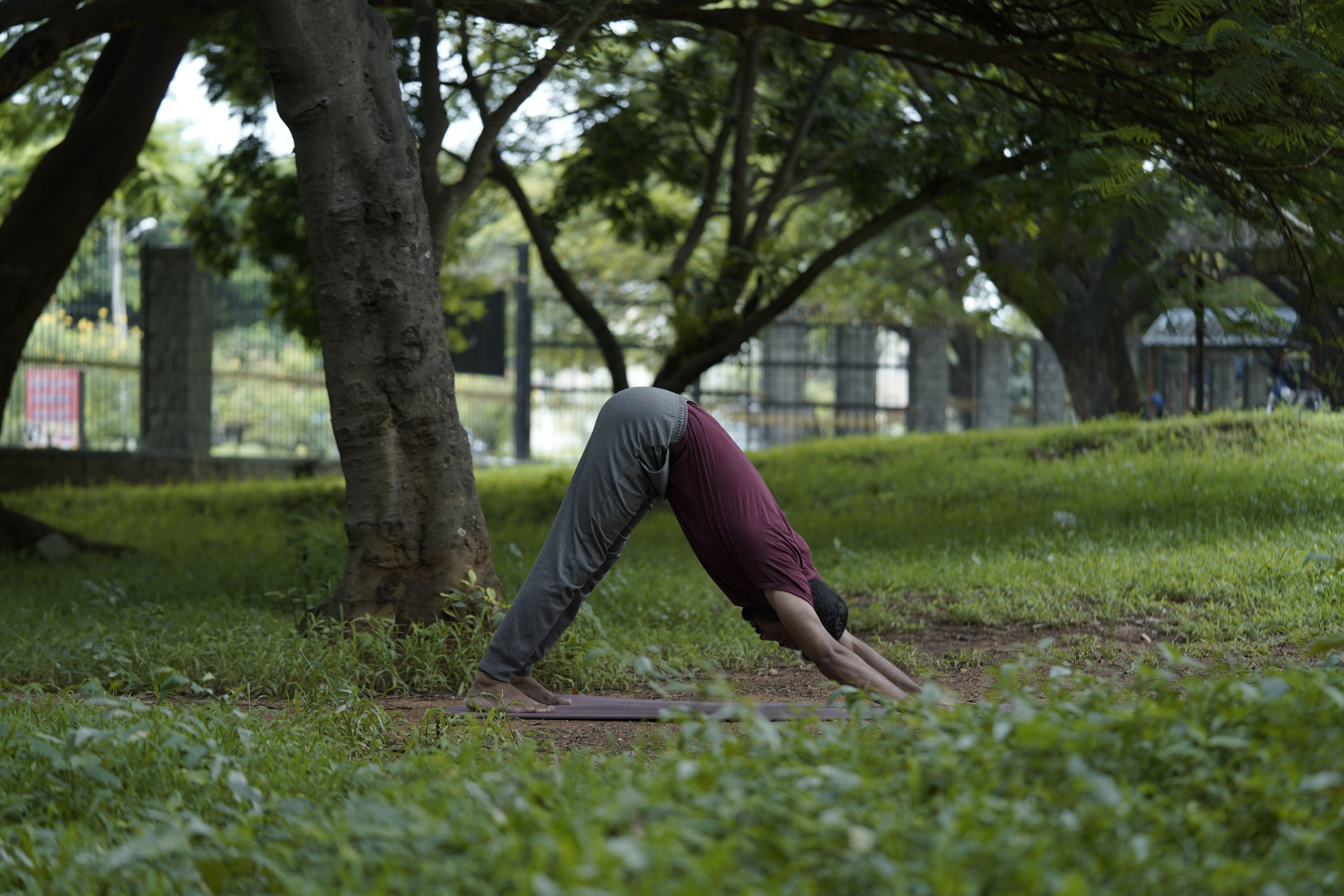
If you’re feeling soreness in your hamstrings, calves, or lower back, Downward Facing Dog can help relieve tight and restricted tissue in these areas.
Start in tabletop position, with your hands and knees on your yoga mat. Push your hips upward until you are balancing on your hands and feet, and your body resembles an inverted “v” shape. Reach your heels toward the floor, stretching your hamstrings and activating your thighs. Keep your head between your arms, lengthening your side-body as you stretch. Stay here for one minute.

For aching throughout your upper and lower back, spinal twists can help unstick any connective tissue that might be causing problems. For the purpose of staying in the pose for several minutes and relaxing fully into the posture, try performing this Supine Twist on the floor.
Lie on the floor with your knees bent and bring them to your chest. Slowly and mindfully drop your knees to your left side while extending your arms outward in a “t” shape. Hold this pose for 2-3 minutes while breathing mindfully. If the pose feels too strenuous to hold for a long period of time, try using a folded under your knees. When you’re ready to switch to the other side, bring your knees back to your chest, and then repeat on your right side.
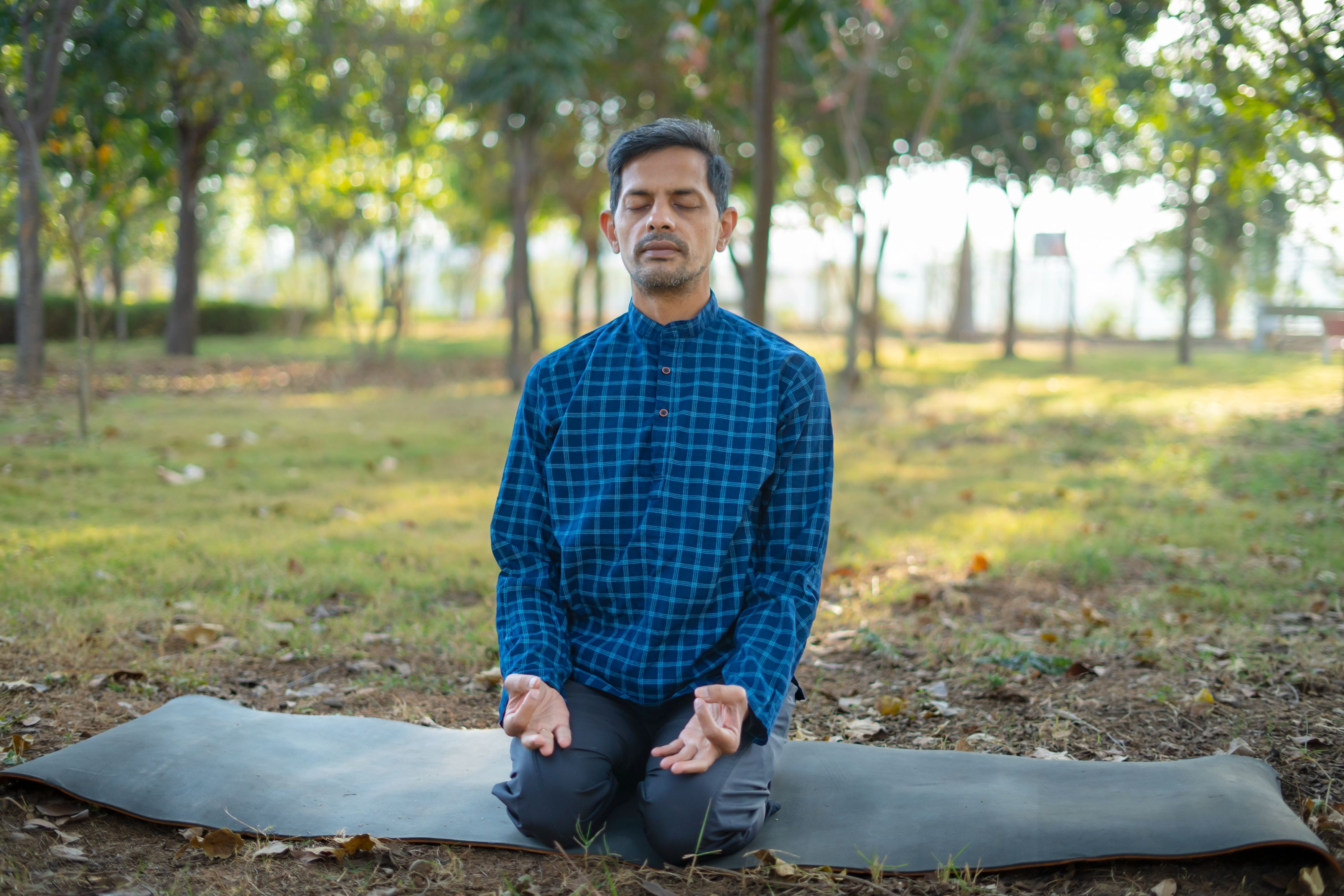
Do you feel pain or stiffness in your feet? Try practicing Thunderbolt pose with flexed feet to encourage an impactful release. Performing this pose in this way can also help with plantar fasciitis.
Start by sitting on your knees in Thunderbolt pose, with your hands resting comfortably on your thighs. Next, shift your weight forward for just a moment while you tuck all 10 of your toes under. Slowly lean back so that your buttocks are rested on your heels, gently applying pressure to the balls of your feet. If this feels uncomfortable or too painful, you can use a folded blanket positioned under your knees for added support. Hold the pose for several breaths or longer if you can.
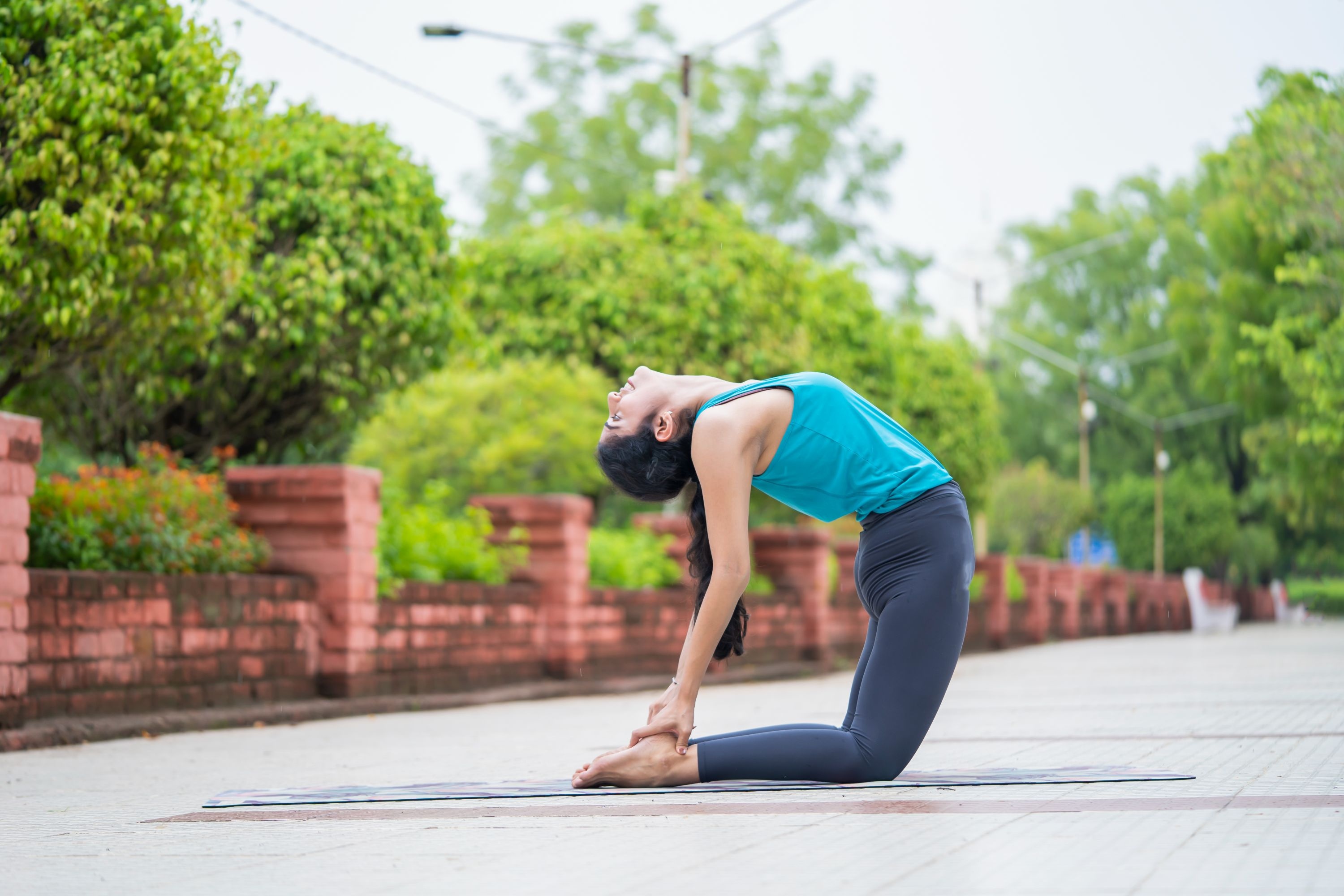
Now that you’ve released the fascia along the backs of your legs, your feet, and your upper and lower back, it’s time to ease tension on the front side of your body. Camel pose targets your abdomen, spine, neck, and the fronts of your shoulders.
Start by kneeling in the center of your mat. Rest your hands on your knees and place the tops of your feet flat on the mat, and sit with a straight spine. With your knees still on the ground, raise your body up and engage your core. Place your hands on your hips and lift your upper chest and shoulders until your face is pointed toward the ceiling. Extend your arms one by one behind you so that you can grab your heels with your hands and continue to lean backward. Only lean as far back as you feel comfortable, and hold this position for 3 to 5 breaths. To safely exit this pose, release your hands from your heels and place them on your lower back for support as you slowly raise yourself back up.
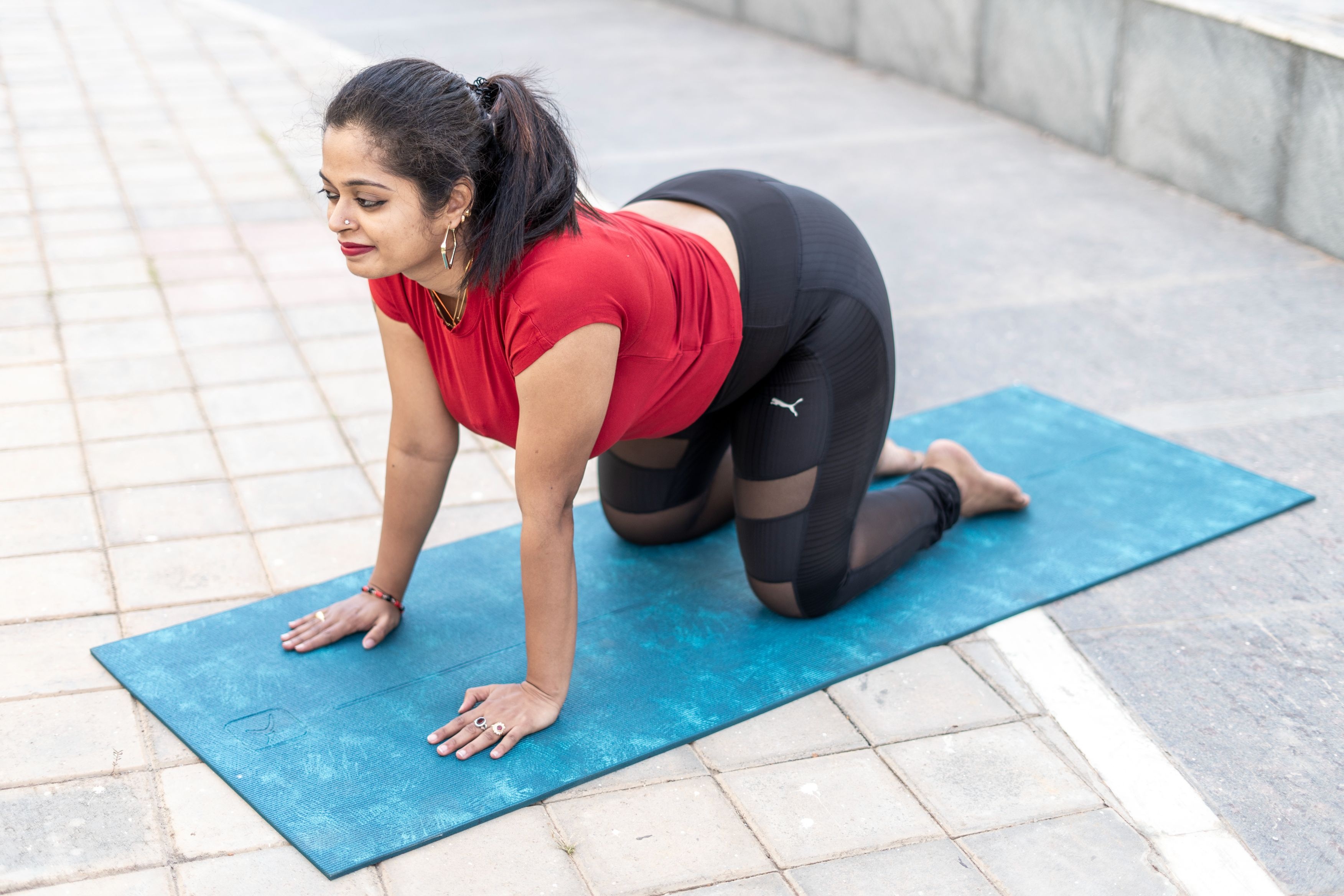
This simple pose helps restore mobility and pliability to the fascia tissue throughout your upper body, and improves the flexibility of your spine.
From your hands and knees, gently arch your back and lift your face to look up as you inhale. Then, as you exhale, curl your spine and turn your face down to look toward your naval. Repeat this movement at least 10 times in a fluid motion.
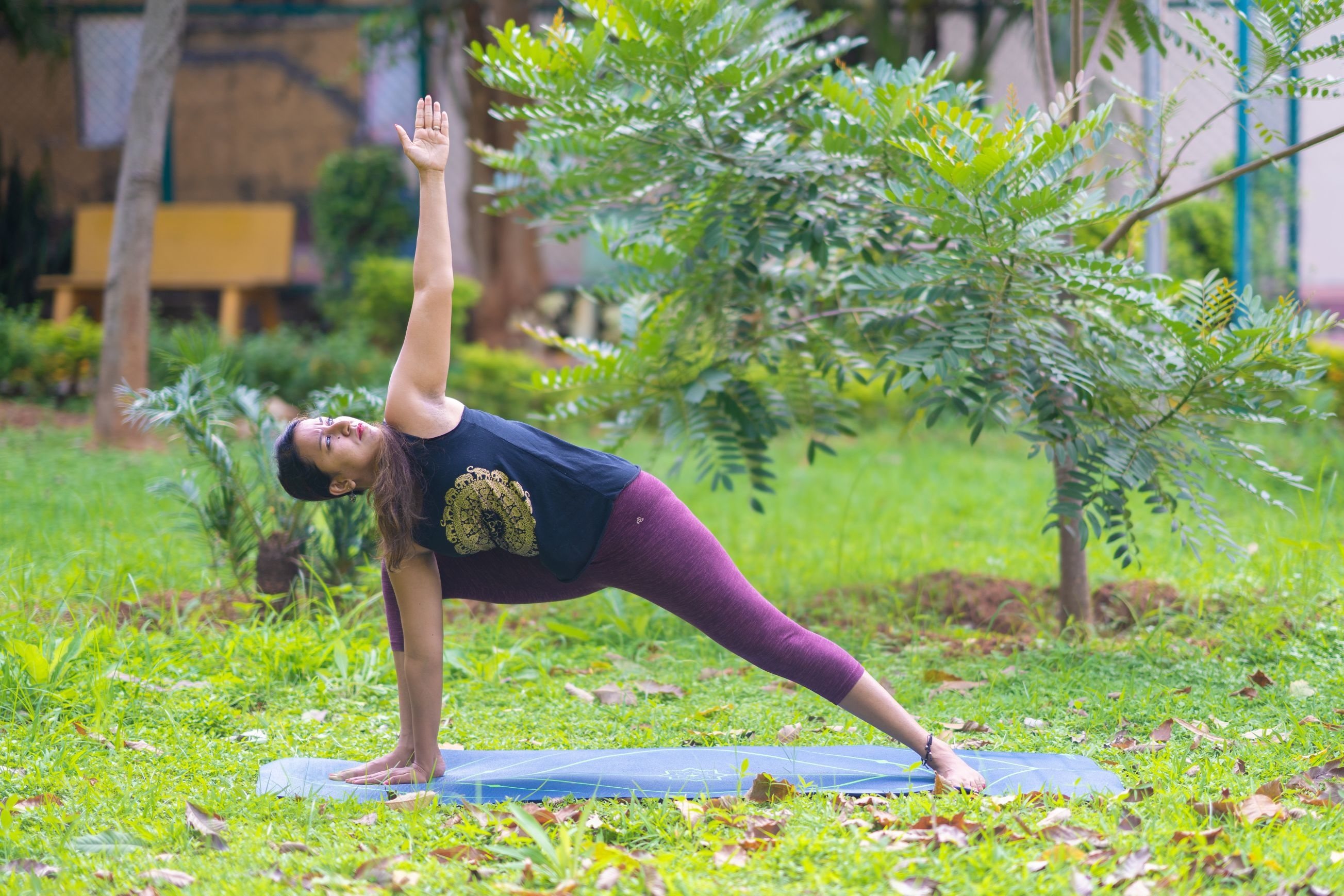
Extended Side Angle helps release fascia tissue around your hips and the sides of your torso, while improving shoulder mobility.
Begin in Mountain pose. Step your left foot forward and turn it 90 degrees. Ground your right foot and turn it slightly inward, and hold your arms out in a “T” shape. Bend your left knee to a 90-degree angle with your left thigh parallel to the floor. Lean toward your left knee by hinging forward at the hips, bringing your left arm to the floor. If you’re unable to reach the floor, you can use a yoga block for support. Lift your right arm and extend it above your right ear, so that your body resembles a straight line from your right ankle to the tips of your right fingers. Breath and hold this pose for 30-60 seconds. Repeat on the other side.

Receive personalized guidance tailored to your unique fitness goals, live with a dedicated coach—no credit card required.